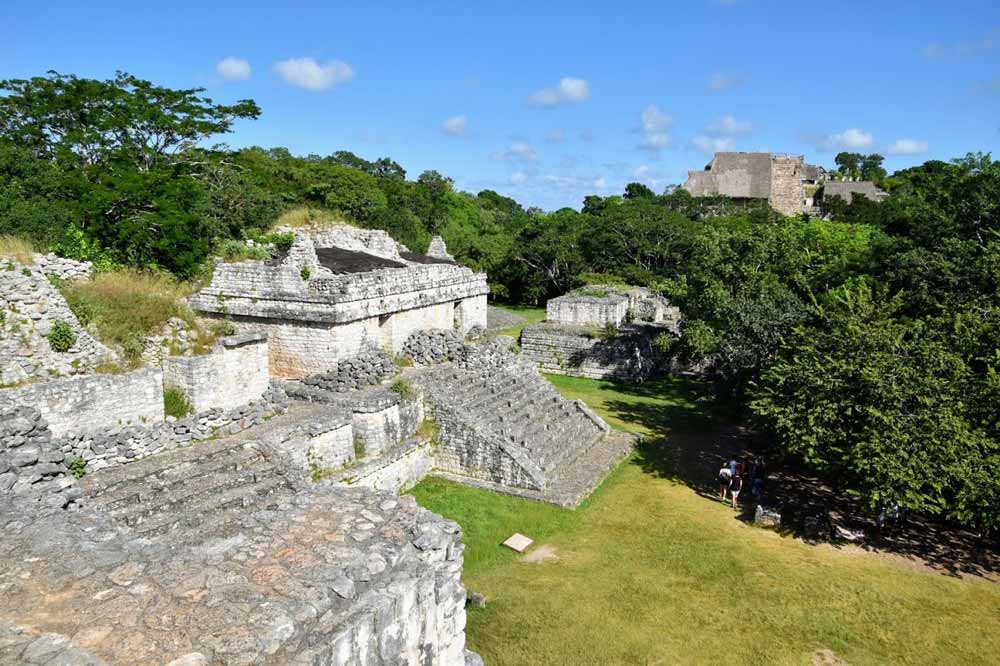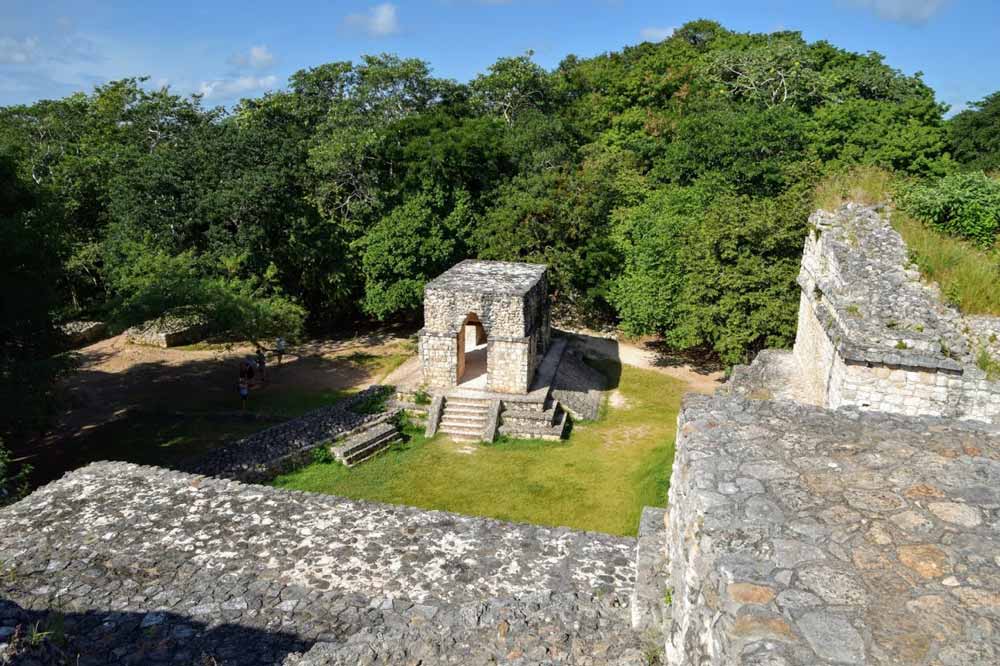There is a high value in discovering hieroglyphics, artifacts, and art, even years before man found a Mayan city. Preservation and continuous research lead to a more open perspective and knowledge of what once was. Ek Balam, is an archaeological site, with the same transcending value as Chichen Itza. Meaning “black jaguar” or “jaguar star”, Ek Balam has more secrets to uncover that will allow us to have a greater appreciation for history and the Mayan civilization.

Ek Balam is an ancient Mayan archaeological site located in the Yucatan Peninsula, Mexico. The site was inhabited by the Maya civilization between 600 and 1100 AD, and it is estimated that the population of Ek Balam at its peak was between 10,000 and 20,000 people.
Its majestic constructions hidden among large trees is a site unlike any other in the Maya area and is unlike any other known archaeological site. Its history begins approximately from the year 300 B.C., until the arrival of the Spaniards.
One of the most notable features of Ek Balam is its impressive central pyramid, also known as the Acropolis, which stands around 100 feet tall. The pyramid is made up of seven layers, each representing a different level of the Mayan underworld, and it is adorned with intricate carvings and sculptures.
Another unique feature of Ek Balam is the surrounding wall that encloses the city, which is almost two miles long and up to 20 feet high in some places. The wall is believed to have served as a defensive structure to protect the city from invasions and attacks.
In addition to the central pyramid and wall, Ek Balam also contains a number of other impressive structures, including a ball court, several temples, and a palace complex.
Today, Ek Balam is a popular tourist destination and a significant site for the study of Mayan history and culture. It is located about 30 kilometers north of the city of Valladolid and can be easily accessed by car or bus.

The archaeological site of Ek Balam receives an estimated 500 visitors a day. People come to enjoy the majesty of the Acropolis, which includes the representation of an enormous Earth Monster. Some people may say that this beautiful Mayan city gets overshadowed by other Mayan ruins in the area, but Ek Balam makes a stand. The site is surrounded by jungle and has a feeling of isolation, you can really feel you go back in time.
On December 5th, 2022, as part of the Archaeological Zones Improvement Program, linked to the construction of the Tren Maya (Maya Train), work began in the Acropolis or Palace of Ukit Kan Lek Tok that has revealed more information about the kingdom and its relationship with the archaeological sites of Cobá, Kulubá and Chichén Itzá. This has attracted locals and tourists to Ek Balam, and many claims to be amazed by the site.
Following the excavation work, sculptures of King Ukit Kan Lek Tok, paintings, murals, vault covers, vessels, decorative elements, ornaments, vases, and hieroglyphic texts were found in the Ek Balam eco-archaeological zone.
Back in 2000, in room 49 called La Casa Blanca de la lectura or Sak Xook Naah, the tomb of Ukit Kan Lek Tok was discovered. This meant having more detailed information about the royal family, culture, and the community, as Ukit Kan Lek Tok appears personified as the god of corn.
The body was deposited with a rich offering that contained more than 13 thousand pieces among clay and alabaster vessels, objects of jade, shell, bone, and pyrite, and numerous earrings in incrustations in the form of skulls, animals, standing out marine species, flowers, stars, geometric figures, and seeds.
Nowadays in the Mayan tomb was found a human femur carved in the form of a perforator that was placed in the chest of Ukit Kan Lek Tok, whose inscription reveals that the bone belonged to his father Ukit Ahkan, a priest without lineage. In another enormous glyph, found near the site, the dynasty of the sacred Lady, mother of king Ukit Kan Let Tok who lived in Ek Balam in the VIII century after Christ, is highlighted.
Ek Balam is known as a sacred place of art, since its king brought the best artisans from other places to paint, write, and produce objects of daily use. The discoveries of the hieroglyphs on the stelae and inscriptions, they discovered that Ek Balam was an economic and political power, just as Cobá, and Chichén Itzá.
This led Ek Balam to be a point of interest for researchers, as the connection between the other Mayan Cities in the area became stronger and stronger as more artifacts and inscriptions were found.
You may be interested in New discoveries amaze everyone at Chichen Itza